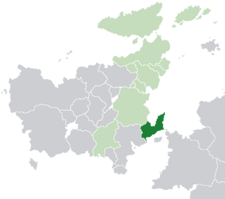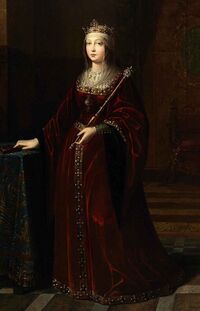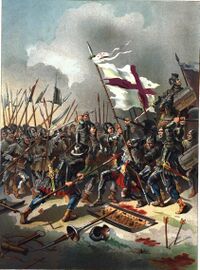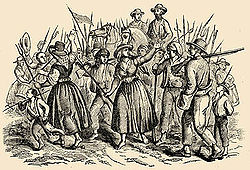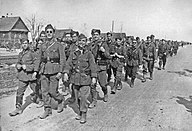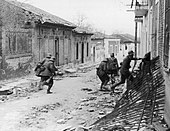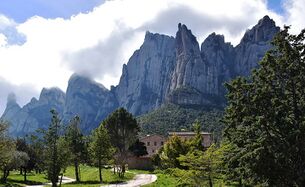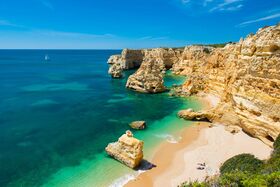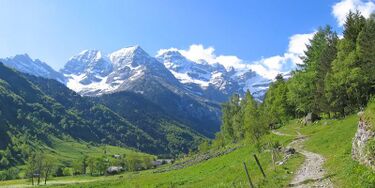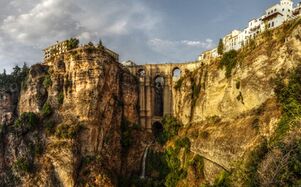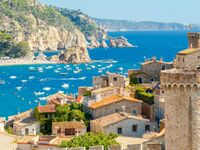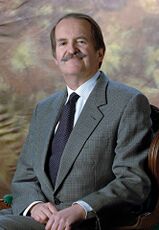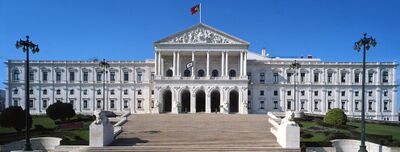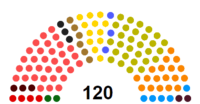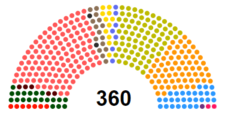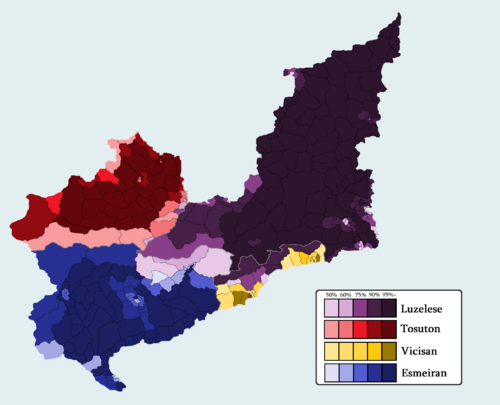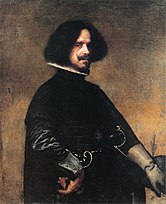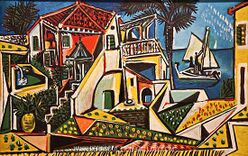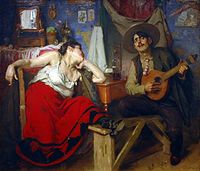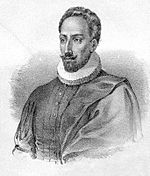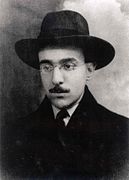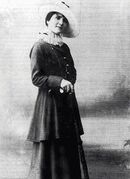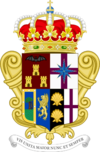Paretia
This article is incomplete because it is pending further input from participants, or it is a work-in-progress by one author. Please comment on this article's talk page to share your input, comments and questions. Note: To contribute to this article, you may need to seek help from the author(s) of this page. |
United Kingdom of Paretia | |
|---|---|
| Motto: Força na Fraternidade! "Strength in Brotherhood!" | |
| Anthem: Marchamos Juntos!"We March Together!" | |
| Royal Coat of Arms | |
Paretia in Euclea(Green) and the Euclean Community(Light Green). | |
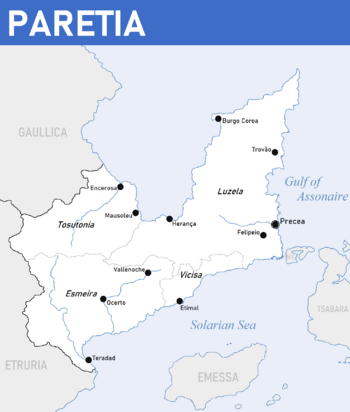 | |
| Capital and Largest City | |
| Official languages | Luzelese Esmeiran Vicisan Tosuton |
| Demonym(s) | Paretian |
| Government | Federal Parliamentary Constitutional Monarchy |
• King | Erasmo |
• Premier | Isilda Cerqueira |
| Carlos Del Alvarez Paulo Sérgio Lima | |
| Zèfir Pelegrí | |
| Josué Marmeleiro | |
| Legislature | Assembleia Nacional |
| Câmara do Senado | |
| Câmara do Congresso | |
| Establishment | |
| 1541 | |
| Area | |
• Total | 240,886 km2 (93,007 sq mi) |
• Water (%) | 7.02 |
| Population | |
• 2016 census | |
| GDP (PPP) | 2020 estimate |
• Total | |
• Per capita | $26,345.11 |
| GDP (nominal) | 2020 estimate |
• Total | |
• Per capita | $23,715.79 |
| Gini (2020) | 28.9 low |
| HDI (2020) | 0.855 very high |
| Currency | Euclo (EUC (€)) |
| Date format | dd.mm.yyyy |
| Driving side | right |
| Calling code | +109 |
| Internet TLD | .pa |
Paretia (Luzelese: Paretia), officially the United Kingdom of Paretia (Luzelese: Reino Unido Da Paretia; Esmeiran: Reino Unido De Paretia; Vicisan: Reino Unido De Paretia; Tosuton: Regne Unit De Paretia), or the UKP, is a Federal Parliamentary Constitutional Monarchy situated in eastern Euclea, located on the Paretian Peninsula. It is shares land borders with two nations, the northwest by Gaullica, and to the southwest by Etruria. It also shares maritime borders with three other nations, to the east by Montecara and Tsabara, and to the southeast by Emessa. Paretia has a population of 31.2 Million people. The Country is a union of four kingdoms, Esmeira, Tosutonia, Vicisa, and Luzela, the latter being the largest and most powerful kingdom of the four. Each of these kingdoms speak a separate language and have different, but still closely intertwined cultures.
The location of Paretia on the western side of Aurean Straits has made it a place of significance throughout much of human history. For much of it's earliest history, the peninsula was inhabited by Tenic cultures, the largest was known as the Eastrian culture. By the 7th century BC, the Piraeans had begun to set up colonial cities across the peninsula. These cities would eventually grow due to the trade that was constantly going through the region. Soon the Solarian Empire would conquer the peninsula, and the empire saw Paretia with high importance and began to invest heavily into the region. Cities were founded by the empire, the largest being Preceus, which today is the capitol, Precea. After the fall of the Empire, it's successor the Verliquoian Empire would take over the peninsula. During this era the Tagamic Invasions from Coius would land on the peninsula and Paretia became the focal point of the conflicts. These hordes would sack and destroy many cities in the peninsula. Eventually the horde was defeated by the Verliquoian hold on the peninsula was severely weakened. Various kingdoms and principalities would form across the peninsula, these kingdoms each had different unique languages such as Luzelese, Esmeiran, Tosuton, and Vicisan. The most notable of these kingdoms was Luzela, located on the eastern half of the peninsula.
By the 1400's Luzela had made itself far richer and more powerful than it's neighbors. In the early 16th century, the Queen of Luzela Marta I, would lead her armies to conquer the peninsula and install puppet kingdoms ruled by the same royal house as Luzela, House Azulas. Martia I would proclaim a United Paretian Empire or the United Kingdom of Paretia. The various Kingdoms would begin to colonize in Asteria Superior and Asteria Inferior, these colonies would be ruled by the separate kingdoms and had different official languages. In 1688 King Marcellus II would establish the first parliament, it however was made up of unelected nobles and businessmen. In the 18th century many all of the colonies would gain independence. An era of violence and revolution against the monarchy occurs in the early 19th century. In 1833, Xavier II would join a movement to create a constitution for the nation.
In 1913, the Great Collapse would destroy the economy and the government was extremely unpopular, political leader Xulio Sousa would be elected Premier in 1925 and began to implement popular liberal policies to help the economy, however the pro-entente pro-functionalist monarchy ruled by Roberta II would allow and support a takeover by the functionalists known as the New Nation of Paretia Party, or Novanists, led by Carlito Palmeira. Sousa would be sent to exile to Etruria and begin a separate government, supporters of Sousa would begin rebellions and resistance in Paretia. The Great War began with the Novanists allying with Gaullica. Eventually the Grand Alliance and the pro-Sousa rebels would defeat the Entente and the Republic of Paretia would be founded by Sousa, however he would die of age shortly after and his successors would be unable to rebuild the country. The Etrurian Revolutionary Republic would conquer Paretia in the Solarian War. The CN would eventually liberate the country. The instability and separatism after this war would lead to a coup by pro-monarchists in 1946. The monarchy and the United Kingdom was restored by this. In 1962 a military coup would attempt to overthrow the government, it would fail to succeed.
Paretia would join the Euclean Community alongside Amathia in 1995. Today the country is ruled by King Erasmo and the government is lead by Isilda Cerqueira, who is the head of a moderate to center-right coalition in the Assembleia Nacional. Paretia is currently member of the CN, the EC, the Aurean Forum, and the Association of Solarian Nations.
Etymology
The word "Paretia" comes from the word Parietem, the Solarian word for "Wall". The Solarians named the peninsula when they conquered it. The name derives from the original Piraean name for the peninsula, Empodio, which meant wall in Piraean. The name comes from the idea that the peninsula was a wall that divided the northern oceans to the southern oceans of Euclea. Most Solarian documents and maps labelled the peninsula as either Parietia or Parietium. Other names for the region include West Aurea and Great Luzela.
History
Prehistory
Antiquity
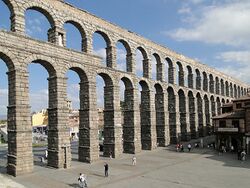
•Piraean Colonies
•Solarian Empire
Middle Ages
•Verliquoian Rule
•Tagamic Invasions
•Kingdoms in Paretia form
•Rise of Luzela and Esmeira
Renaissance and Unification
At the Beginning of the renaissance period, art and culture began to explode from the Etrurian city-states and had spread it's influence into the peninsula. During the time, many prominent painters and other artists began to make their works in Paretia, including Esmeiran Juan Albuquerquez and Luzelese Marco De Gama, both influenced by their Etrurian neighbors.
After the discovery of the Asterias by Assim Asteris in 1488, the Luzelese crown began to commission explorers expeditions to colonize on behalf of Luzela. Shortly followed by expeditions by the Esmeirans. They sent explorers such as Andres de Marchena, Tadeu do Rosário, and Duarte Bórgia, these countries would colonize what are today Marchenia, Maracao, Picasia and Belmonte. These colonies would begin to grow in size many from Luzela and Esmeira would immigrate to these colonies, the wealth of the Paretian kingdoms would begin to explode during this period.
In 1524, Queen Marta I would inherit the throne of Luzela her family, the House of Azulas, was a very rich and influencial family with that was heavily supported by the people. At the time the peninsula was divided multiple states, the two largest were Luzela and Esmeira. The Tosutons however were divided in a lose confederation of Principalities. During this period Marta I sought to make Luzela a greater power as they had become rich from their colonies. They also were the most populous and wielded the largest naval armada of the Paretian kingdoms.
By the early 16th century, one of the regions of the peninsula would become a center of conflict between Luzela and the Tosutons, this region was known as the Mausoterra, located between Luzela and Tosutonia it was inhabited originally by mostly Tosutons, but Luzelese peoples moved westward and they would begin to fight over control of the region, many small kingdoms and princedoms would form in this region ruled by both peoples. Luzela at this time was only one of a few Luzelese kingdoms. These other kingdoms were separate and wanted to stay independent. Marta I would use spread the influence of the House of Azulas into these kingdoms and install her family as their rulers. Her family rule new kingdoms, and even would rule the non-Luzelese Kingdom of Visica. Marta I's justification for taking over these kingdoms was to unite the Luzelese from the Tosuton threats in the Mausoterra.
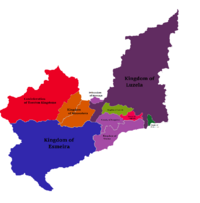
By 1528 Marta I had a bigger agenda, which was to conquer the peninsula by using these puppet kingdoms ruled by the House of Azulas, which would become known as the Alliance of House Azulas. In March 1528 she would invade the Kingdom of Casiovio, a small Luzelese Kingdom not ruled by the Azulas House. This would be followed by the invasions of all the neighboring kingdoms of Luzela, such as Esmeira and Tosutonia. This would be the beginning of what is known as the Paretian Wars. Esmeira and Tosutonia would form an alliance against Luzela. Marta I would raise a large army and navy to at the beginning of the war and first invaded Mausoterra and the small Luzelese states. Her armies would conquer these kingdoms swiftly by 1529, but she would set her sights on Esmeira, she would first attempt to capture the city of Vallenoche, which ended up being a massive loss for her armies.
The conflict also began in the colonies as Luzelese forces in Belmonte would invade Picasia. Luzela's naval armada proved to be more powerful as they would defeat the Esmeiran fleet off the coast of Belmonte and in the Solarian Sea. In 1532, Picasia would fall as they were in a supply shortage due to a Luzelese blockade. In Luzela, Marta I's younger siblings, Infante Cássio of Herança and Infanta Alba, would prove themselves as successful military strategists and even better soldiers. Infanta Alba would be given the nickname "The Bloody Princess" by many in eastern Euclea. In 1533, Esmeira would attempt to invade Vicisa, one of Luzela's allies, and would be crushed at the Battle of Liega. The battle would lead to a massive retreat by the Esmeiran forces and the fall of the city of Vallenoche. Up north, the Tosuton forces were holding out. In 1535 Luzelese forces would begin to besiege the capitol of Esmeira, Ocerto, which would last for 8 months, until the city fell.
By mid 1536 Luzela had conquered most of Esmeira and their colonial possessions, New Esmeira would surrender to Luzela in September 1536. In November 1536, Esmeira, Tosutonia, and their allies would unite their armies and attack the Luzelese city of Herança in the Mausoterra. Marta I had realized their forces were outnumberred and could not reach the city in time, she instead would continue her invasion into Esmeira. She then would have her armies march across the Eastern Aventines into Tosutonia, and in January 1537 would send a message to the Esmeiran and Tosuton armies. The message said that they the armies of Luzela would burn down the cities of Tosutonia and kill their families while they are busy attacking Herança. The Esmeirans and Tosutonians would then send their armies back home and meet the Luzelese at the plains of Acaton, located in eastern Tosutonia, the Esmeiran and Tosuton armies were weary and tired as they had rushed back to Tosutonia with haste. The Luzelese forces would destroy their armies swiftly at the Battle of Acaton, which saw the fall of the kingdoms of Tosutonia and Esmeira and the Peninsula of Paretia conquered by Luzela.
For the next four years, Queen Marta I would rule Luzela as one kingdom that ruled the peninsula and would integrate the colonies into the kingdom. In order to keep unrest from occuring, in 1439 Marta would make the colonies separate entities that spoke their separate languages of Esmeiran and Luzelese. However the language of the government business between the colonies would be Luzelese. Marta would use this system between the colonies as a way to begin setting up the governemnt in Euclea. From 1538 to 1541, Marta I would install puppet monarchies in the conquered kingdoms, all from the House of Azulas. Many of these monarchs were siblings, cousins, and children of Queen Marta I. During this period, the kingdom would grow in wealth even more now with control of the resource-rich lands in Esmeira and Tosutonia, however Marta I saw the faster growth and strength of other, unified, Euclean nations. She decided to unify the peninsula under one state that would rule all four of the kingdoms, in 1541 Marta I would declare The United Paretian Empire, which is today the United Kingdom of Paretia.

Early Modern
Pareita would make a colony in modern day Gulbistan, at the port city of Thyropinia, as a deal between them and the Zemani Empire
Revolutionary Conflict
In 1771, King Rafael II would ascend to the throne after the death of his father Rafael I. Under Rafael II the country saw an explosive rise in poverty across the country, particularly in the cities. Rafael and his family, known as the House of Sagriera, were particularly unpopular amongst the populace due to their life in a lavish palace life style in the outskirts of Precea in the suburb of Jardinagem. In June of 1782 Rafael II would call off his advisors and representatives, known as the Cortes de Paretia, leading to outrage amongst the middle class of Paretia. The rise of the Etrurian First Republic lead to revolutionary sentiment across Euclea, including Paretia, the events in Etruria and Rayenne inspired a group of revolutionaries known as the Reasonist Movement, lead by Leandro Tavares, met in Burgo Coroa in 1792 and created their movement. It's ideology was based upon revolutionaries in Werania and Etruria and promoted militarism, meritocracy, and rationalism. Their ideology was much more radical than other revolutionary groups, but they became far more popular. Protests began to occur across Paretia for the creation of a constitution, which Rafael II denied. The anti-government movement would increase greatly upon the return of Tiago IV, a descendant of the House of Azulas and heir to the throne. In 1806, he used the revolutionary movement to claim the throne for himself and promised to work with the revolutionaries on forming a constitution. The country at the time was near a state of civil war as peasant revolts lead by small militias began to spring up across the cities and countryside. In 1807 the Massacre at Esodos would see hundreds of peasant revolutionaries killed by the royal guard. This would lead to near rebellion lead by the Reasonist Movement and Tiago IV, although it was mostly protests, the radical groups began to use violence against Rafael II. In 1813 the Rationalists would assassinate Rafael II by bombing one of his carriages, as he was childless, Tiago IV would step up to the throne. He would begin to attempt negotiating a constitution with the revolutionaries.

Afterwards his attempts would continue to fall flat of the demands of the radicals in the Reasonist Movement, who began to threaten him as well, with Reasonist leader Leandro Tavares proclaiming that they would rid the monarchy if this royal family fails them. In July of 1813 Tiago IV would reject the constitution of the revolutionaries on claims that it is too radical for him to accept. This would lead to anger among the Reasonists, whos most radical sect would in August commit the Regicide of 1814, which they would attack a wagon carrying the two eldest sons of Tiago IV and murder them. This would lead to Tiago IV completely rejecting any negotiations until his death in 1816. His son, Xavier II was more open and supportive of the Reasonist ideology, but still would not support anything that in his mind was too radical. He continues to negotiate with the Reasonists for years and would not be able to make any consessions with the Reasonists, and in 1925 outright rejected them like his father. The response was many attacks on the government, including bombings, assassinations, arson, and vandalism against the government, and on the 7th of June 1827 would commit the Regicide of 1827, which was larger and in scale and under complete support by Tavares and the Reasonist leadership, who would coordinate the killings of all of Xavier's children, except for one, ands all of his royal relatives to make sure no one ascends the throne. Xavier, his wife, and daughter would escape as turmoil across the country would leave it in a state of shock for nearly two months. The Reasonists were put down by then and Xavier would return to Precea with massive protests for agreement, called the Agreement Protests, called for an agreement between Xavier and the Reasonists to stop the violence. From 1830-1833, he would meet with moderate Reasonists and other intellectual leaders and revolutionaries to create a constitution and in 1833 he and his associates would ratify the Constitution of The United Kingdom of Paretia.
Though a constitution was established, he was still seen as an enemy by many revolutionaries and there would still be unrest in the following years. In 1835 Xavier II and his wife Roberta would die in a ship wreck off the coast of Luzela. Due to the Regicide of 1827, the monarchy was in jeopardy and the revolutionaries saw opportunity. However the Paretian statesman noble Renatus of the House of Pavillon would claim the throne of Paretia and put down any revolutionary threat by 1839.
First Constitutional Era
Great War
Republic Period
After the Great War in Euclea ended in early 1935, the constitutional monarchy was deemed as a major part as to why the PNNP rose to power, and was replaced with a republic. The Republic's new government was a presidential republic. The position of President would replaced the position of Premier and the Monarch and function as both Head of State and Head of Government. The Assembleia Nacional still functioned in a similar way as before but now with a Vice-President added to it. The first elections were held in summer 1935, and Xulio Sousa and the now extremely popular Paretian Democratic Party would win in a landslide. During this time Sousa began to enact laws to rebuild the economy and kick out the far-right from Paretia.
The first signs of trouble in the Republic came with the sudden death of Sousa in January 1936. His VP Martinho Carreira would replace him, however, he would not live up to his predecessor's promises and the country's economic state was in continuous failure. As a former Entente nation, over the Great War also put a large burden on the economy, and many cities were unable to rebuild for years. Carreira's government would collapse in late 1936,. The PDP eventually split apart into the moderate left-wing Worker's Party of Paretia and moderate right-wing Rebuild Paretia Party. The next election would see the former win big and Ramiro Felipes come to power. Many of his policies would work at first, however unemployment rose to 23% and he ended up in a scandal where he was caught being bribed by large companies to not enact pro-union reforms.
The rise of the Greater Solarian Republic in the Legionary Reaction caused a fear of weakness in Paretia's leadership. He would eventually lose power in the 1939 election, which saw the rise of Enzo Queiroz Miranda and the Protect the Country Union. He promised to make sure Paretia was safe from nations such as Etruria. He was considered a catch-all ideologically and many of his policies including increasing wages and expanding the military as a means of getting people back to work were able to help somewhat stabilize the economy. However he was a harsh anti-councilist, and arrested many far-left leaders which he saw as a threat that was just as much dangerous as the far-right. He claimed the Amathian Council Republic and Kirenia were trying to use the aftermath of the Great War to overthrow capitalist governments.
WIP
Solarian War
Late 20th Century
21th Century Paretia
Geography
Paretia is approximitly 240,886 km2 in size. It is located on the promenant Paretian Peninsula which extends from eastern Euclea. The country is located between the Florian and Lumine Oceans at the Aurean Straits, which separate the country narrowly from Tsabara and the Coius continent.
The Paretia coastline is rough and jagged in most places with rocky shores cliffs spanning it's beaches. The inland regions are separated by towering mountains known as known as the Eastern Aventine Range and rolling hills in around the mountains. The nation's highest peak is Mount Avìle on the western border with Etruria, it reaches as high as 3,057 meters (10,032 ft). The longest river is the River Espiesa which flows from the northern border of Esmeira and Tosutonia and flows to it's mouth at Teradad at the southern end of the country. The flat region in Esmeira is known as the Deguita Plain.
Much of the flatlines of the country are full of rolling hills with various crops and other agricultural fields located across them. Many valleys are located in the inland of the nations as well hidden between the mountains. Much of the country is covered in a golden like soil that is known for it's tilth. The northern tip of the Paretian Peninsula is at a point known as Ponto Brilho, the eastern end of the peninsula next to Montecara is known as Cabo Continental.
The Les Fulles Mountains, Tosutonia
The Viña River Valley, Esmeira
The Costa Do Ulisto, Luzela
Mount Avìle, Esmeira
The cliffside town of Relva Amarela, Luzela
Climate
The Paretian Climate is mostly a mediterranean climate that varies in different parts of the country. In the center of the country as the altitude grows, the climate becomes colder and more a apline climate. Regions like Esmeira in the southern end of the country have a very diverse climate, which ranges depending on how far inland it is, from a frigid tundra at the tops of the Eastern Aventines, to a Humid Sub-Tropical climate in the middle, and a warm mediterranean coast. In inland Luzela, the climate becomes dry and arid areas exist due to the Eastern Aventines blocking rain. Tosutonia has the coldest climate among the kingdoms with a somewhat temperate climate compared to the other kingdoms and the mountains in Tosutonia are the coldest region in the country.
The average temperature of a Paretian winter depends on the location within the country. In eastern Luzela, they are usually warmer winters and snow is uncommon on the coasts, while further inland and in Tosutonia, winters can be very cold and damp, along with a very common snowfall everyone winter. The summers on the coasts of Paretia are very humid and very warm, in some areas temperatures can reach as high as temperatures that are found in Rahelia. Inland the summers are more temperate but still warm. Paretia gets some of the most sunlight in Euclea and in some years has experienced droughts in regions like Luzela, Vicisa, and southern Esmeira.
The weather of Paretia usually has normal thunderstorms in warmer times and winter storms when it is cold. Paretia rarely experiences extreme blizzards during the winter months. The country can experience tropical storms during the summer months, although a powerful tropical cyclone is rare.
Flora
Fauna
Government and Politics
The government of Paretia is a Federal Parliamentary Constitutional Monarchy in which the Monarch is the Head of State and appoints a Premier to be the Head of government. The Constitution of The United Kingdom of Paretia, adopted by the country in 1833, is the document that sets up the rules, regulations, and framework of the government. The current Monarch of Paretia is King Erasmo, who has ruled since he was given the throne in 1980. The current heir apparent of the monarchy is his daughter, Princess Miriam.
Government
The Legislature of Paretia is a set up in a bicameral system and is known as the Assembleia Nacional. There are two legislative chambers, the lower chamber is known as the Câmara do Congresso, and the upper chamber is known as the Câmara do Senado. The last chamber is the Coroa, which is where the monarch presides. In order for a bill to be made into law, it needs to pass a vote in both the Câmara do Senado and Câmara do Congresso, and then get approval from the Coroa to which then it becomes law. The National Assembly Building is located in the center of Precea and it houses both legislative chambers.
The Head of Government of the country is the Premier. The Premier is appointed by the monarch after a vote of confidence in the Câmara do Congresso. The Premier is either a leader of a party or the leader of a coalition that has control of most of the Assembleia Nacional. The Premier controls the Government of Paretia and usually serves a term of 3 years in office, but the country does not have term limits on the office. The current Premier of Paretia is Isilda Cerqueira, she has been in office since 2020.
The Câmara do Congresso has a total of 360 seats who represent electoral districts and are elected to each seat through a annual General Election or Snap Election. Each of the nations have a purportionate number of seat,s Luzela having 161, Esmeira having 96, Tosutonia having 73 and Vicisa having 30. These elections are held every three years. The country has a multi-party system. The current largest party in the Câmara do Congresso is the Social Democrats, however they are not part of the ruling government coalition, which is the Compromise Coalition, a far-right to centrist coalition of right leaning parties, the largest being the Conservative Union.
The Câmara do Senado is the upper house and has a total of 130 seats. Each of the representing the various counties of the country. Each of the four nations have 30 representatives each. They are elected through General Election or Snap Election which are held every three years. They use a multi-party system and the largest parties are the Social Democrats, and the Conservative Union, who lead the Compromise Coaliton. This chamber is also where the Premier and Monarch resides when called to the legislature for various meetings and deals.
Political parties
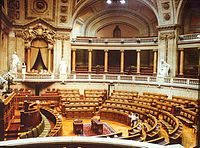 |
|
Government (75) The Conservative Union(UC) (29) The Patron League(LP) (18) Catholics for Liberty(CL) (12) The Liberals of Paretia(LDP) (6) The Alternative Party(ALT) (5) The Esmeiran Party(PE) (3) The Party for Luzelese Interests(PIL) (2) Opposition (45) The Social Democrats(SD) (33) Paretian Section of the Workers' International(SPIT) (4) The Tosuton Front(FT) (3) The Vicisan Party(PV) (3) The Greens(Vs) (2) |
Paretia has a multi-party system in it's government. Since the creation of the parliamentary government in 1833, most politicians were independents until the 1910s when the councilists, democrats and functionalists arose. For most of contemporary history the largest parties in Paretia were the Social Democrats, the Paretian Section of the Workers' International, and the Conservatives. After the return of the monarchy, the Assembleia Nacional was reformed back into it's pre-republic state. During the 50's the fear of socialists from Kirenia and the memory of fascist rule from Etruria led to a very centrist decade in Paretia. By the 60's the country was economically behind it's other Euclean neighbors, and the debate of joining the newly established Euclean Community began. Up until the 70's the newly-established Conservative Union was the most dominant party. By the late 80's the Social Democrats would be in power and finally get Paretia into the Euclean Community. Since the mid-2000's eucloscepticism has grown and lead to a growth in new parties that are more radical than of the older ones. Over time various political parties have come and gone, notable parties could include the far-right People's Nationalist Party which existed in the middle 20th century, or the Progressive Party which existed from the 80's and dissolved in 2014.
Today the largest party is the Social Democrats, however, the Conservative Union and many other center and right leaning parties have formed a coalition known as the Compromise Coalition. This coalition has a total of 8 parties all together, the largest being the liberal conservative Conservative Union, the right-wing populist Patron League, and the center-right Catholics for Liberty. The coalition was founded in 2013 but has evolved in membership since, today the coalition is lead by the right-wing but politically independent populist Isilda Cerqueira, made as a compromise between the populists and the non-populist members of the coalition.
Today the Compromise Coalition is in a fragile state as a split between the populists and the older parties has led to little compromise between the two since 2020. One major divide between the coalition is that the older factions such as the Conservative Union or the Liberals of Paretia are pro-EC while the younger populists such as the Patron League or the Alternative Party are very anti-EC and Eucloskeptic. Since the 2020 Paretian Election, the productivity of the coalition had diminished greatly and the opposition parties were able to block much of the legislation that attempted to be passed. A poll from the end of 2020 showed the popularity among voters of the Conservatives or the CL was below 20% for their own parties whilst support for the Patron Movement or the Alternative Party were around 40%.
There are also regional parties that represent the citizens of the four kingdoms of Paretia. In Esmeira, there is the Esmeiran Party. In Tosutonia there is the Tosuton Front. In Vicisa there is the Vicisan Party, and in Luzela they have two, the Party for Luzelese Interests and the Dominion Party. Four regional parties were each created after the formation of the Assembleia Nactional the only one of these parties that does not exist today is the Luzelese Party. The Luzelese split apart into two parties, the Party for Luzelese Interests focused on the interests of the Luzelese, whilst the Luzelese Party focused on spreading Luzelese interests into the other regions, which today the Dominion Party and their ideology is centered around.
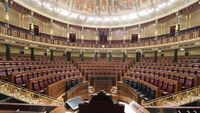 |
|
Government (207) Conservative Union (UC) (76) Patron League (LP) (66) Alternative Party (Alt) (28) Liberals of Paretia (LdP) (15) Catholics for Liberty (CL) (11) Esmeiran Party (PE) (7) Dominion Party (PD) (2) Party for Luzelese Interests (PIL) (1) Opposition (153) Social Democrats (SD) (119) Greens (Vs) (20) Paretian Section of the Workers' International (SPIT) (7) The Tosuton Front (FT) (5) The Vicisan Party (PV) (2) |
Law and Judiciary
The Law of Paretia is a form of civil law which is based upon the system of Solarian Law. The national laws of the land are written in the Constitution of The United Kingdom of Paretia which has changed over time through dozens of amendments since it's radification in 1833. The highest court in the land is the High Court of Paretia located in the capitol, which is where hearings on the highest level such as on cases of final appeals to the court or constitutional court hearings. Each of the Kingdoms also have their own high courts as well as constitutions that lay our their regional laws, however their regional laws cannot outweigh the national law. There are also individual municipal and local level courts in the cities and towns of Paretia.
The law enforcement of Paretia is divided into federal level forces run by the Paretian government and the Kingdom level forces run by the four individual kingdoms. The largest police force in Paretia is the Federal Paretian Law Enforcement or Aplicação da Lei Federal Paretiana, run by the Paretian government and monarchy under the Ministry of Justice, it deals with most crimes in Paretia. There also is the Civil Paretian Law Enforcement, or the Aplicação da Lei Civil Paretiana. which deals with more organized crime and federal crimes, as well as drug trafficking and terrorism . In the capitol of Precea, it is heavily patrolled by the Majesty's Police Service, or the Serviço Policial de Majestade, which was created by the monarchy in the 17th century and is the oldest serving law encforcement agency of Paretia, it is a volunteer grendamarie force with the duty to defend the government, monarchy and public of Paretia. The Federal Paretian Law Enforcement has over 100,000 law enforcement officers and is one of the largest police agencies in Euclea. Other federal agencies include the Paretian Prison Agency, the Paretian Border and Customs Agency, and the Paretian Maritime Police Agency. The national intelligence agency of Paretia is the Intelligence and Information Service.
Paretia on an international level has a fairly low crime rate statistically, however in comparison on a regional level in Euclea, it has one of the highest crimes rates. Especially in comparison in Eastern Euclea, it has the highest crime rate among the Euclean Community nations. Among specifically violent crimes, Paretia also ranks number one among the EC. A major factor of this can include the trafficking of illegal objects and substances from Coius into Euclea through the Aurean Straits, as well as the other way around. The largest factor of these crimes is drug trafficking, which is one of, if not the central issue that the law enforcement agencies of Paretia have worked rigorously to stop. The crime rate of Paretia however has been going on a downward trend since the mid-90s, although slowly, it is expected to continue this way.
Subdivisions
Paretia is divided into four constituent kingdoms, each of them possessing their own culture, languages, history, landscape, and government. Each of these kingdoms have a constituent monarch and regional president which are ruled by all ruled by the Luzelese Monarchy of Paretia. The largest of the kingdoms is Luzela, which of course is the ruling power of the nation. Esmeira is the second largest, Tosutonia the third largest, and Vicisa the smallest of the kingdoms. The Capitol city of Precea is somewhat autonomous from the Kingdom of Luzela, but it is not a separate subdivision. The Kingdoms are divided into smaller groups such as congressional constituencies and communes.
Here is a map of the four kingdoms:
| Map | Name and flag | CoA | Administrative centre | Population | Regional President | |||||
|---|---|---|---|---|---|---|---|---|---|---|
| Kingdoms of Paretia | ||||||||||
| Ocerto | 9,048,957 | Alfonso Rodriguez (PE) | ||||||||
| Precea | 13,105,386 | Octávia Rebelho (UC) | ||||||||
| Encerosa | 6,552,693 | Talia Caselles (SD) | ||||||||
| File:Vicisaflag.png Vicisa | Etimal | 2,496,264 | Fidel Davila (UC) | |||||||
Foreign Relations
Military
The Paretian military is known as the Paretian Armed Forces and is divided into four separate branches, the Paretian Land Forces, the Paretian Naval Armada, the Paretian Air Force, and the Paretian Special Defenses. The Supreme Military Command presides over these branches which serves under the Monarch. The military is managed by the Ministry of Defense which is headed by Defense Minister Luca Granade, who is appointed by the Premier. As of 2020 the military was the fourth-largest in the Euclean Community, it had 157,000 active personnel and over 60,000 in reserves. The military spending is the most spent on part of the Paretian government's budget with a total of $29.5 Billion in spending.

The largest branch of the Paretian military is the Paretian Land Forces, making up almost 75% of military personnel and are based at home and in locations all over the world, specifically as part of peacekeeping efforts globally. The Paretian Naval Armada is fairly large and operates in the monitoring and patrolling of areas around the Aurean Straits such as the Solarian Sea and the Gulf of Assonaire. The Navy is essential in the efforts to prevent illegal substances from entering or exiting Euclea and also the protection of one of the world's most important shipping lanes. The Paretian Air Force mostly patrols in and around Paretia and works heavily with the other branches, they will also enforce peacekeeping and air traffic safety in the region. The Paretian Special Defenses is the youngest and smallest branch and mostly works together with the other branches and performs special tasks such as special operations and aide to other branches, they also serve in responding to natural disasters and also work with sending humanitarian aide to those in need, they also serve as a military aide to the Paretian Law Enforcement at home and will be called in to disperse events such as riots.
The Paretian intelligence agency is known as the Intelligence and Information Service, or the SII. It is tasked with matters of intelligence and foreign affairs. There are sub-branches of the SII as well. Each of them are tasked with intelligence such as foreign intelligence information or military intelligence information which they provide to the government of Paretia.
Economy
Paretia has one of the largest economies in the Euclean Community and the continent of Euclea, with a nominal GDP of $839.98 Billion and a GDP PPP of $1.003 Trillion. It's GDP per capita is $23,715.79(nominal) and $26,345.11(PPP). Paretia is a developed country with multiple sectors that are part of the economy. Paretia has scored high on the Human Development Index(HDI) at 0.855. It is a capitalist mixed economy with both private and public sectors within. Paretia is one of the least developed economies in the Euclea Community, mostly due to slower economic growth similar to Etruria and Amathia, putting it behind other Eastern Euclean states. Since it's acceptance into the EC it has begun to stabilize and build steadily. Paretia has very liberal banking system with low corporate taxes. Paretia's central bank is the Central Bank of Paretia located in Precea.
There are many sectors of the Paretian economy. The largest sector of the Paretian economy is it's agricultural sector, due to it's large amounts of fertile land across the country. It's top exports recently have been automobiles and car parts, pharmaceuticals, home appliances, electronic appliances, cooking oils and fruits. Newer industries such as the aerospace industry, service industry and pharmaceutical industry have introduced new sectors of the economy. One of the most important economic influencers in Paretia is the Aurean Straits, which is one of the busiest trade lanes on the planet.
Trade

Industry
Infrastructure
The Paretian Infrastructure system was historically weaker and behind it's Euclean neighbors. It's rail network was limited in growth due to the mountainous interior being difficult and expensive to traverse early on. In the 20th century Paretia began to expand it's infrastructure massively.
Paretia today has an extensive road system 500,391 km (310,928 mi) of roads across the country and 11,763 km (7,309 mi) of motorway. Roads and motorways are managed by the state and serviced by the Paretian Roads Service, many private companies are also contracted in the service of maintaining the roads in different parts of the country, such as Estradasol. Many large bridges have been built and are located across Paretia, the largest being the Duarte Bórgia Bridge in Precea, which is also the largest bridge in Euclea at 17 km in length. Recently the road safety of Paretia has been criticized by many and that there isn't enough funding going into repairing the roads.
There are 20 major ports located in Paretia, mostly at the locations of major cities. The largest of these ports is the port of Precea, which is located north of the Western Aurean Strait and is one of the busiest seaports in Eastern Euclea. Other major ports include the ones at Teradad, Chorto, Herança, and Burgo Coroa. The Paretian merchant fleet has a total of 296 merchant vessels as of 2020 and is one of the largest fleets in the world. The country also has a large ferry system that connects the many cities of Paretia as well as locations in Emessa, Montecara, and Etruria. Paretia is one the key nations with control of the western side of the Aurean Straits.
The Paretian railway system has grown immensely over the 20th century, it has an annual ridership of over 1 million every year. It is owned by the Paretian Railway Service and has over 15,145 km (9411 mi) of railway spanning the country. Most of the railway system today is electrified with a total of 10,092 km (6271 mi) of the railroad being electrified for modern railway systems. The country has a total of Most of the current railway system has over 3,800 active locomotives using the railway system. The railway has grown mostly during the late 20th century, especially the 1980s-1990s, it has slowed down in growth recently.
Paretia has a total of 36 international airports located in many of the country's largest cities. The largest being Rodrigo Honrado International in Precea. Other major airport hubs include Modernisme International in Encerosa, Pedro de Espinosa International in Ocerto, and King Xavier II International in Burgo Coroa. The national airline of Paretia in Viagem Paretia which serves destinations all over the globe.
Energy
Agriculture
Paretia's economy has historically been heavily reliant on it's agricultural industry and only recently has begun to move into more industrial sectors began to grow. Paretia has does not have much arable land compared to other Euclean nations, with around 23% of the land on the peninsular being arable. The biggest area of arable land is the Deguita Plain in Esmeira. Paretia's soil is very much known for it's tilth. Despite the small amount of usable land, there are over 1,400,000 farms located across Paretia. Around 33% of farms are located in Esmeira, 32% in Luzela, 29% in Tosutonia, and 6% located in Vicisa. Most farms are privately owned by families, some larger companies have recently begun buying land in Paretia.
Paretia's agriculture industry produces a variety of products. The most common being citrus fruits, grapes and wine, various vegetables, olives, tomatoes, and maize. Paretia is one of the largest producers of wine in the world, with vineyards located in the country's many wine regions. Paretia is also one of the world's largest producers of vegetable oils such as olive oil. Many fruits and vegetables are grown in Paretia, the largest being citrus fruits and tomatoes. Other crops include cereals such as wheat, rice, and maize.
Paretia's agricultural industry has seen a decline in recent years due to environmental issues such as drought and wildfires. Many have also begun to move from the rural areas into urban cities in recent years.
Science Technology
Tourism
Services
Demographics
Paretia, according to it's 2020 census, has a population of 31.20 Million people, making it the 8th largest nation in Euclea and XX in the world. It has a population density of 129.54/km2. The population of Paretia has been going on an upward trend due to Paretia having an above average birth rate for an Euclean nation, and immigration from places like Coius. Paretia is one of the few nations of East Euclea to reach a replacement rate above 2.0 and has a fertility rate of 2.1. Paretia's total population is expected to reach 59.89 Million by 2070. The populace is distributed unevenly across the country, as most people live near the coasts and rivers, around the mountainous interior. Paretia has a large immigrant population, which almost entirely come from Coius, usually Rahelia or Bahia.
Ethnicities
Paretia is a multinational and plurinational nation. The nation of Paretia was formed by the unification of the Paretian Peninsula by Luzela in the 16th century. Paretia considers itself a multinational nature as described in it's Constitution in 1833, that the nation is a "Union of Nations of the Paretian Peninsula" and is also known as the "United Kingdom of Paretia". Regionalism is very common among the nations of Paretia, each kingdom is mandated at least one political party to represent them on the national level. The promotion of the Paretian identity is based heavily around the fact no nation has a majority over the other three nations in terms of size and representation in the Assembleia Nacional. In Paretia there are four nations, or Kingdoms, with their own language and cultures. The four kingdoms being Luzela, Esmeira, Tosutonia, and Vicisa. They each have their own ethnic culture that defines them.
The largest ethnic groups of Paretia include; Luzelese, Esmeirans, Tosutons, Vicisans, Vespasians, Gaullicans, Tenorians, Deguitans, Emessans, and Rahelians. The largest of these groups is the Luzelese of Luzela, they are the largest ethnicity in Paretia, accounting for around 40% of the population. They are the people that conquered the peninsula and founded the United Kingdom, and are by far the most influencial ethnicity of the country in both government and culture. The Esmeirans have smaller ethnicities such as the Tenorians and Deguitans usually catogorized with them in most statistics and the census. There are other ethnic groups other than the main four nations of Paretia, there are small minority groups of Vespasians and Gaullicans on the western border. There is also a large Emessan minority in southern Paretia. A large Rahelian community also exists in Paretia, most are from Tsabara or Zorasan.
According to the 2020 Paretian Census, 40% of Paretians identified as Luzelese, 28.8% as Esmeiran, 20.8% as Tosuton, 7.4% as Vicisan, 1.1% Rahelian, 0.9% Gaullican, 0.6% Vespasian, 0.1% Emessan, and other smaller ethnicities making up the remaining 0.2%. The 0.2% includes Bahians, Pardarians, Montecarans and others.
Languages
Paretia has four official languages, Luzelese, Esmeiran, Tosuton, and Vicisan. All three languages are used in the federal and regional government's laws and actions, but Luzelese is predominantly used in government proceedings and communications. Since the 17th century, the government has promoted the use of all four languages. Each kingdom and their colonies had official languages separate from each other. However Luzelese has spread into other regions mainly due to many Luzelese migrating westward after the unification of Paretia. Today Paretia's education system requires a set amount of learning of all four major languages in all kingdoms. This education system is known as "Quadri-lingual Education", with the goal of creating coherent communication between the peoples of Paretia. Today around 47% of Paretia speaks Luzelese, 26% Esmeiran, 21% Tosuton, 4% Vicisan, and 2% being other languages.
There are smaller regional languages in Paretia, with very few numbers of speakers. The two largest of these groups are the Tenorian and Deguitan languages, both of which are located in far eastern and far western Esmeira respectively. They are federally protected endangered languages are are offered to be learned in education systems in their respective Kingdoms.
In the mountainous far west reaches of Paretia are small communities of Gaullican and Vespasian speakers. In regions like the northern coast of Tosutonia there are large amounts of Gaullican speakers. In areas south of the city of Teradad in Esmeira there are Vespasian communities. Other smaller communities of languages include Emessan, Montecaran, and Rahelian. Many migrant communities from Coius also speak their native languages such as Rahelian and Pardarian. The most common foreign second languages amongst Paretians are Gaullican, Vespasian, and Weranian.
Paretia's languages are also official languages in four other nations, being former colonies. These include Luzelese-speaking Belmonte and Maracao, and Esmeiran-speaking Marchenia and Picasia. Paretia and these four other nations make up the "Luzephone-Esmeironic Nations".
.
Religion
Religion in Paretia
Sotirianity official religion of Paretia, with Catholicism being it's largest sect. As of 2020, in Paretia the Solarian Catholicism made up 85% of the country's population. Other groups include Episemialists and Amendists, albeit they are very small minorities. The largest religious group outside of Sotirianity is Irfan, mostly made up of migrants from Coius. Other smaller minorities include Badi, Tulyata, and Tenkyou. Around 8% of the country are irreligious, which has been a growing trend since the early 20th century.
Solarian Catholicism plays a crucial role in Paretia's culture, as it has been the dominant faith for centuries. There are thousands of churches and hundreds of cathedrals across Paretia. Some notable locations include Curs Purs Cathedral in Encerosa, Precea Cathedral, and Ocerto Cathedral. There are also many monasteries in Paretia where many devout go to live. There is a famous pilgrimage site in Vicisa, at the city of Santiago, where it is said that the body of Saint James is located. It is the destination of the Way of Saint James pilgrimage.
Historically the smaller religious sect have been persecuted by the dominant Catholics, especially during the Functionalist state. Today Paretia allows religious freedom as per it's constitution. Recently irreligious has grown to becoming the largest religious identification. The Irfan minorities are mostly made up of migrants from Coius, mainly Tsabara and Zorasan.
Cities
Largest cities or towns in Paretia
2020 census | |||||||||
|---|---|---|---|---|---|---|---|---|---|
| Rank | Kingdom | Pop. | Rank | Kingdom | Pop. | ||||
 Precea  Ocerto |
1 | Precea | Luzela | 3,243,102 | 11 | Teradad | Esmeira | 368,111 |  Encerosa  Herança |
| 2 | Ocerto | Esmeira | 2,123,249 | 12 | Comtéis | Tosutonia | 328,232 | ||
| 3 | Encerosa | Tosutonia | 1,523,021 | 13 | Pancarta | Visega | 307,382 | ||
| 4 | Herança | Luzela | 922,522 | 14 | Esodos | Luzela | 289,083 | ||
| 5 | Felipeio | Luzela | 817,452 | 15 | Martessa | Luzela | 286,102 | ||
| 6 | Vallenoche | Esmeira | 797,439 | 16 | Espiesa | Esmeira | 242,312 | ||
| 7 | Burgo Coroa | Luzela | 728,299 | 17 | Sigolus | Tosutonia | 183,529 | ||
| 8 | Etimal | Visega | 611,231 | 18 | Quiscarmã | Luzela | 174,201 | ||
| 9 | Mausoleu | Tosutonia | 402,193 | 19 | Chorto | Luzela | 159,212 | ||
| 10 | Trovão | Luzela | 401,102 | 20 | Cantos Árboles | Esmeira | 122,998 | ||
Culture
Art
Paretian art is derived from a mixture of the different schools of art of the four kingdoms that was derived mainly at the time of the renaissance and has evolved into a unique art style of it's own today. Paretian art has many unique forms outside of painting including architecture, sculpture, and even tilework, as seen in the blue ceramic tilework known as Azulejos. Paretian art has changed over the years from being mostly religious artwork to artwork that critiques society.
The earliest forms of art in Paretia go back to the period of the Tenic tribes and Piraean colonies. Piraean influence eventually led to the earliest forms of sculpture in the country. The art eventually was influenced by Solarian rule. During the age of the Verliquoian Empire Paretia would go though a period of Solarianesque Art. The renaissance began in neighboring Vespasia and had spread it's influence to the Peninsula. Many Paretian artists travelled to Etruria to learn. The most famous Paretian renaissance painters include Esmeiran Juan Albuquerque and Luzelese Marco De Gama and Helío Jacinto Luzio. Many of the richest of Paretia were patrons of the arts and commissioned many paintings during this period. Most paintings in Paretia depicted religious topics, mostly Sotirian scripture.
The Paretian Baroque era is sometimes also called the Paretian Golden Age of Art, many of the most famous Paretian artists did Baroque paintings in the 16th and 17th centuries. The most famous is Rodrigo Honrado who was the chief royal artist to the monarchy by King Marcellus II, most of the paintings in the Paretian Royal Palace are Honrado's. Unfortunately many of his painting were destroyed in an earthquake however. Another artist from the baroque period is Galenian-born Esmeiran Painter El Galano who painted Esmeiran Patriotic images. During the time a Paretian identity was being founded in the arts, mostly being patriotic and religious art.
After this period was a period of artistic decline in Paretia as the Euclean Spring unfolded. In the 19th century the age of romanticism would bring back art into Paretia, much of the romanticist are was based on issues occurring the country at the time, such as the revolution against the government and the creation of the constitution and the Assmebleia Nacional. One of the most known romanicist painters was artist and printmaker André Goes, who painted some of the most famous Paretian art to come out of the 19th century. He is considered one of the first modern artists in the world. Many of his paintings were criticisms of society at the time.
The 20th century would lead to the new movements such as futurism, cubism, and surrealism. The most famous artists during this time include Baltasar Salvo and Vicisan artist Valdo Pola Balboa, who was known for his art depicted scenes and events during the Great War and the Solarian War. During the great was he was a profound supporter of the Paretian Democrat forces against the Novanist Entente government. He painted scenes of atrocities committed by the functionalists during the war. During the Solarian War he escaped Paretia to Gaullica as he was considered an enemy of the National Solarians. After the Solarian War lots of Paretian art would become what is considered modern art. In the 21st century many art Museums are built across Paretia and are popular tourist sites in the country.
Architecture
Paretian architecture early on never had a true identity and was heavily influenced by outside cultures such as the Etrurians, the Gaullicans, and the Rahelians. Not until the 15th century as the four Kingdoms of Paretia began to build on their identity as peoples. Their architectural styles were heavily influenced by gothic and mannerist architecture. After the unification of Paretia in 1541, many glorious palaces were built in Paretia for the royal family, their style became known as azuline art, after the House of Azulas dynasty. Rahelian influence since the Tagamic Invasions and trading between the two created the mixed Pareto-Rahelic Architecture also known as mudéjar.
Later on baroque and rococo styles would become the dominant styles in Paretia and it's colonial possessions. Most of the royal buildings used in Paretia today were designed during this period. It became heavily popular in the late 17th century and was used during the design of many buildings in the cities of Paretia. This includes ones such as the royal palace, the Palacio do Solo, in the suburb of Lálamo, outside of Precea. It was commissioned by King Tiago I in 1702 and completed under King Henrique in 1716, it was designed by Esmeiran architect Juan de San Gonzales. These styles continued to be used heavily in the 168th century during the rule of the new House of Segriera.
The architecture in the 19th century would be dominated by revivalism and eclectic, which brought back older styles like the neo-azuline and Neo-mudéjar styles that were created during the time. Later on as the industrial revolution grew in Paretia cast iron architecture would also emerge.
Into the 20th century and architecture in Paretia was dominated by art nouveau, which also saw new regional styles of architecture began to form in the different regions of Paretia, such as Tosuton modernisme style, which saw architects like Gregori Comadran, who designed the extravagant Curs Purs Cathedral in Encerosa, which is still undergoing construction due to setbacks from war and natural disasters. Other styles like art deco and brutalist architecture also emerged in the 20th century.
Today, contemporary architecture is very diverse and with many notable architects being from Paretia. Many world-famous architects also would come to Paretia and design buildings, such as Belmontese architect Cláudio Bachlechner who designed the MPAC Museum in Herança and the Teradad Casino in Teradad. Today many skyscrapers and green buildings have been built to promote environmentally friendly and efficient architectural design.
Music
Paretian music is known for it's influence across the globe in music. There are different styles of music from the various regions of Paretia. Historically Paretian music is heavily influenced by Solarian, Piraean music. Paretian music began to take shape in the middle ages with genres like classical music and traditional music. Today popular music is most commonly listened to genre in Paretia.
There are many classical music composers that are from Paretia, including 18th century composer Jorginho Santos Monteiro or modern composer Mariazinha Caetano. Opera has been historically popular in Paretia, many famolus opera houses are located in Paretia.
Each region of Paretia has it's traditional music. In Luzela, the musical style known as fado originates from. It arose in Precea as a music used among the urban lower class citizens in the late 19th century, it is commonly played with a Luzelese guitar. Some of it's early pioneers include Paretian guitarist Daniel Coimbra and students at Luzelese universities. There are many notable fado singers from Luzela, including Ramona Neves, known as the Queen of Fado. The musical style is still very popular even today in Luzela. In Esmeira, the style of flamenco is very popular and known for it's elaborate dances, it originates from Esmeiran folklore music. It is commonly played using a classical guitar, the modern classical guitar itself originates from Esmeira. In Tosutonia, styles such as sardana originate, it is commonly played with a flute and tambora. It is also known for it's circular dances. In Vicisa music is heavily influenced by past Weranic and Tenic cultures. The use of bagpipes is common in traditional music in Vicisa, as well as in the other regions of Paretia.
Paretia's music has had an influence on it's colonies in the Asterias, particularly in the world of Solarian music. Many of it's musical styles have influenced the creation of new musical styles in these countries.
Today pop music is very popular in Paretia since the late 20th century. Many pop singers are from Paretia's different kingdoms, each singing in their native language. Pop music gets influence from popular culture from all over the globe, and includes many genres such as rock music, hip-hip, and electronic music. Some examples include Esmeiran pop duo Los Del Montaña, Luzelese pop singer Raquel da Vila, Tosuton rock band Els Trucs, or Luzelese hip-hop artist General Z. Paretia today participates every year in the Euclovision Song Contest, this year they were represented by Raquel Da Vila
Clothing
Cuisine
Media

Literature
Sports




